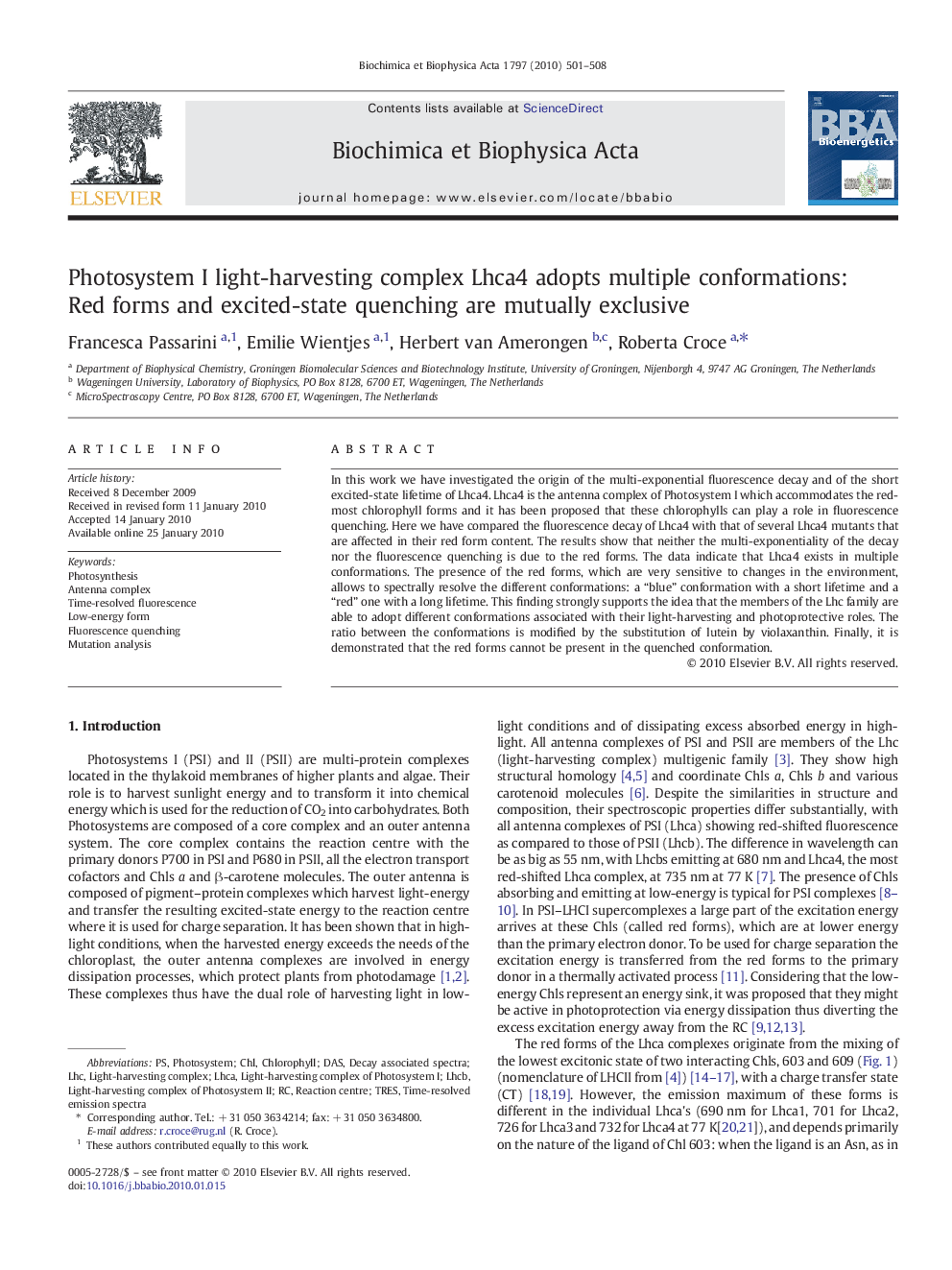| Article ID | Journal | Published Year | Pages | File Type |
|---|---|---|---|---|
| 1942887 | Biochimica et Biophysica Acta (BBA) - Bioenergetics | 2010 | 8 Pages |
In this work we have investigated the origin of the multi-exponential fluorescence decay and of the short excited-state lifetime of Lhca4. Lhca4 is the antenna complex of Photosystem I which accommodates the red-most chlorophyll forms and it has been proposed that these chlorophylls can play a role in fluorescence quenching. Here we have compared the fluorescence decay of Lhca4 with that of several Lhca4 mutants that are affected in their red form content. The results show that neither the multi-exponentiality of the decay nor the fluorescence quenching is due to the red forms. The data indicate that Lhca4 exists in multiple conformations. The presence of the red forms, which are very sensitive to changes in the environment, allows to spectrally resolve the different conformations: a “blue” conformation with a short lifetime and a “red” one with a long lifetime. This finding strongly supports the idea that the members of the Lhc family are able to adopt different conformations associated with their light-harvesting and photoprotective roles. The ratio between the conformations is modified by the substitution of lutein by violaxanthin. Finally, it is demonstrated that the red forms cannot be present in the quenched conformation.
